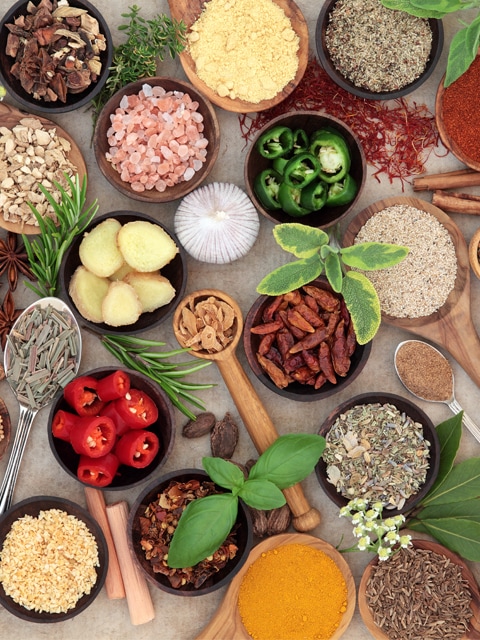
Balancing acidity in dishes can be a delicate art. Too much acidity can overpower flavors, making your dish taste harsh or unbalanced. However, with the right techniques, you can master the art of achieving harmony between acidity and other tastes.
From adding a touch of sweetness to incorporating fats or using the right herbs, there are many ways to counteract acidity without losing the vibrant flavors you love. This article will share essential tips for achieving that perfect balance, ensuring your meals are flavorful and well-rounded.
Key Ingredients To Balance Acidity
1. Sweeteners (Sugar, Honey, Maple Syrup)
Adding sweetness can neutralize sour or bitter flavors. When balancing acidic ingredients like lemon juice or vinegar, a small amount of sugar or honey can soften the sharpness without overpowering the dish. For example, adding a teaspoon of honey to a citrusy vinaigrette can bring out the flavors without making it cloyingly sweet.
2. Fats (Olive Oil, Butter, Avocado, Coconut Oil)
Fats help to smooth out the harshness of acidity, adding richness and body to the dish. A drizzle of olive oil in a salad or a dollop of butter in a sauce can help to mellow out the acidity, making it more palatable. Fats also enhance the flavor profile by coating the tongue, providing a balanced mouthfeel. Another benefit of fats is that they can be used to preserve food in oil, helping to maintain flavor and extend shelf life, while adding a touch of richness to your dishes.
3. Dairy (Cream, Milk, Yogurt, Cheese)
Dairy products are great at taming acidity. The creaminess of heavy cream, yogurt, or even a dollop of sour cream can counterbalance the sharpness of citrus or vinegar in sauces, soups, and dressings. A small spoonful of Greek yogurt can add richness to a vinaigrette, while Parmesan cheese can bring both umami and a creamy balance to acidic pasta sauces.
4. Herbs And Spices (Basil, Mint, Cinnamon, Nutmeg)
Fresh herbs can add freshness and complexity that can help distract from overwhelming acidity. Basil, mint, and parsley are all excellent choices for salads and Mediterranean dishes, where acidity from tomatoes or lemon can be prominent. Similarly, a pinch of spices like cinnamon or nutmeg can provide warmth and counterbalance the tanginess of certain ingredients.
5. Salt
Salt not only enhances all the flavors in a dish but can also neutralize excessive acidity. When used in moderation, salt helps to balance the sharpness of vinegar or citrus, especially in sauces or soups. However, it’s important to be careful with salt, as too much can overpower the other flavors in your dish.
Techniques For Balancing Acidity In Dishes

The Ultimate Guide on how to Balance Flavours
1. Adjusting With Sweetness
Sweetness is one of the most effective ways to counteract acidity. This doesn’t mean dumping sugar into your dish but rather incorporating it carefully and sparingly. A little honey, maple syrup, or even a touch of fruit like apples or grapes can soften the tang of citrus or vinegar. For instance, if your tomato sauce tastes too acidic, try adding a pinch of sugar to create a smoother, more balanced flavor. The key is to add sweetness gradually and taste as you go.
2. Incorporating Fats
The richness of fats can smooth out sharp acidic flavors. Olive oil, for example, is commonly used in vinaigrettes to balance the acidity of vinegar or lemon juice. Similarly, adding a small knob of butter to a soup or sauce can soften the acidic note and round out the flavor.
Fatty ingredients like avocado can also help to balance acidity in salads or grain bowls, where the acid from lemon or vinegar can be too overpowering if not tempered with the right fats. You can also freeze saucesto preserve their rich flavors, making them easier to incorporate into future meals while maintaining the perfect balance.
3. Using Salt To Balance
Salt is a flavor enhancer that can amplify other flavors while also neutralizing acidity. If your salad dressing or tomato sauce is too tart, a pinch of salt can make a big difference in balancing the acidity. However, be sure to taste as you go, as salt can quickly dominate the dish. It’s best to add salt at the end of cooking to ensure you're not adding too much.
4. Citrus Pairings
Citrus fruitslike lemons, limes, and oranges are acidic by nature, but when used in moderation, they can elevate dishes without overwhelming them. To balance citrus acidity, pair it with ingredients that have complementary flavors. For example, adding lemon juice to a fresh vegetable salad can bring out the flavors of the vegetables, but using a tangy cheese or rich avocado can balance that acidity perfectly.
5. Adding Dairy For Creaminess
Dairy products, such as cream, milk, yogurt, and cheese, can help counterbalance acidity while adding a smooth, creamy texture to dishes. For example, a dollop of sour cream in a tomato soup or a spoonful of Greek yogurt in a vinaigrette can soften the acidic note. Similarly, cheese such as Parmesan or ricotta can mellow out a tangy pasta sauce and add richness.
6. Blending With Umami
Umami flavors can help balance acidity by providing depth and savory richness. Ingredients like soy sauce, miso, Parmesan cheese, or even mushrooms can add an earthy, savory note that balances out the brightness of acid. For instance, adding a small amount of soy sauce to a citrusy marinade or incorporating mushrooms into a tomato sauce can create a more complex and balanced flavor profile.
7. Using Roasted Vegetables
Roasting vegetables intensifies their natural sweetness and can help balance out the acidity of dishes. For example, roasted tomatoes, peppers, or carrots bring out natural sugars and caramelized flavors that counteract sourness. Add these roasted veggies to your salads, soups, or sauces to add a layer of sweetness and depth, reducing the need for extra sugar or sweeteners.
8. Herb Infusions
Herbs like basil, mint, parsley, or oregano can help balance acidic dishes by adding freshness and complexity. Fresh herbsprovide aromatic notes that complement acidic flavors and lighten the overall taste of the dish. For example, a fresh sprig of mint can balance the acidity in a citrusy salad dressing, or basil can brighten up a tangy tomato sauce.
9. Adding A Starch Or Grain
Starches like rice, potatoes, pasta, or grains like quinoa or couscous can absorb and soften acidic flavors, creating a more balanced dish. If your dish is too tangy, consider adding a starchy base to help absorb excess acidity. For example, serving a lemony chicken dish with rice or couscous can help offset the sourness, while also adding texture and heartiness.
10. Using Alcohol Or Vinegar In Moderation
While vinegar and wine can contribute to acidity, they can also be tempered by using them strategically. Reducing the acidity in vinegar-based dishes can be done by adding a small amount of wine or a splash of balsamic vinegar, which has a naturally sweet undertone. In cooking, allow wine or vinegar to cook off in a pan before adding other balancing ingredients to ensure their sharpness doesn’t overpower the dish.
Balancing Acidic Flavors In Specific Dishes
1. Salads
In a salad, the dressing is often where acidity can become overwhelming. To balance it, use a combination of vinegar or citrus with olive oil and a pinch of sugar. If you're working with acidic vegetables like tomatoes or radishes, pair them with creamy cheeses(e.g., goat cheese or feta) or avocado to balance out the sharpness.
2. Tomato-Based Sauces
Tomatoes are naturally acidic, so adding a pinch of sugar can help reduce the sourness. Additionally, incorporating fats like olive oil or butter can round out the flavor, while fresh herbs like basil or oregano can bring balance and complexity.
3. Marinades
Marinades with citrus or vinegar are great for tenderizing meat, but they can sometimes leave a strong acidic aftertaste. To balance this, use honey, olive oil, and a small amount of soy sauce or mustard. This will give the marinade a balanced sweet-salty profile, reducing the overpowering acidity.
Common Mistakes To Avoid When Balancing Acidity
- Overcompensating with Sweetness: It’s easy to think that adding more sweetness will balance the acidity, but too much sugar or honey can make your dish overly sweet. Always taste as you go and balance with small amounts.
- Ignoring Salt: Salt is one of the best ways to balance acidic flavors, but it’s often overlooked. It’s essential to taste and adjust the seasoning as you cook.
- Using Too Much Acid: Adding too much citrus or vinegar at once can overwhelm a dish. Start with small amounts and adjust gradually.
- Not Using Enough Fat: Fat helps smooth out sharp flavors, so don’t neglect it when balancing acidity. Olive oil, butter, and cream can make a huge difference in rounding out flavors.
FAQs
How Do I Know If My Dish Is Too Acidic?
If your dish tastes too tart or sour, it’s likely too acidic. To fix it, try adding a small amount of sugar or honey to balance out the sharpness, or add a fat source like olive oil or butter to mellow the flavor.
Can I Use Only Sugar To Balance Acidity?
Sugar can help balance acidity, but it shouldn’t be your only tool. Combine sugar with fats, salts, or dairy for a more nuanced flavor balance.
Is It Okay To Use Vinegar To Balance Acidity?
Vinegar is itself acidic, but in moderation, it can enhance the flavors in a dish. To balance vinegar’s acidity, combine it with other flavor elements like fat, herbs, or sweetness.
How Can I Balance Acidity In A Soup?
For soups, a little cream, butter, or yogurt can help tone down acidity. Adding a small amount of sugar or honey can also soften the flavor without making it too sweet.
What Can I Do If My Salad Dressing Is Too Tart?
If your salad dressing is too tart, try adding a bit of honey, maple syrup, or another sweetener. Also, increasing the amount of olive oil or adding some creamy yogurt can help balance the acidity.
Quick Recap
Achieving balance in your cooking doesn’t require complex skills just a few thoughtful adjustments. By experimenting with different techniques, such as using sweetness, fats, and complementary flavors, you can tame acidity and enhance the overall flavor profile of your dishes.
With these strategies, your cooking will reach new levels of flavor sophistication, making your meals more enjoyable and well-balanced.
